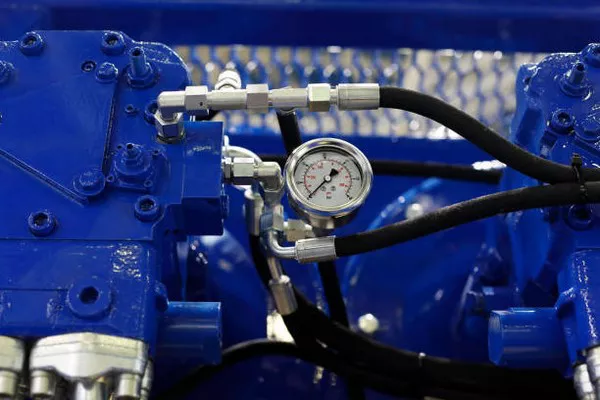Refrigeration systems are an integral part of modern life, providing us with cool, comfortable environments and preserving perishable goods. At the heart of these systems lies the compressor, a vital component that plays a crucial role in the refrigeration cycle. In this article, we will delve into the functions of compressors in refrigeration systems and their significance in maintaining the desired temperature levels.
Understanding Refrigeration Systems
Before we dive into the specifics of compressor function, it’s essential to have a basic understanding of how refrigeration systems work. At their core, these systems operate on the principle of removing heat from one location and transferring it to another. This cycle allows them to maintain low temperatures within a controlled space, such as your home or a commercial cold storage facility.
The Four Main Components of a Refrigeration System
Compressor: As the heart of the system, the compressor is responsible for raising the pressure and temperature of the refrigerant gas.
Condenser: This component facilitates the release of heat from the refrigerant gas, causing it to condense into a high-pressure liquid.
Expansion Valve: The expansion valve reduces the pressure of the liquid refrigerant, causing it to evaporate and absorb heat from its surroundings.
Evaporator: The evaporator is where the heat absorption takes place, cooling the surrounding area as the refrigerant turns back into a low-pressure gas.
The Compressor’s Role in Refrigeration
Now, let’s focus on the compressor and its pivotal functions within a refrigeration system.
Gas Compression: The primary function of the compressor is to compress low-pressure refrigerant gas, typically in a gaseous state, to a higher pressure and temperature. This compression process is crucial because it allows the refrigerant to circulate through the system efficiently.
Heat Transfer: During compression, the refrigerant gas experiences a significant increase in temperature. This high-temperature, high-pressure gas is then sent to the condenser, where it releases the accumulated heat to the surroundings. This heat transfer process is essential for cooling the refrigerant and preparing it for the next phase of the cycle.
Maintaining Flow: Compressors ensure a continuous flow of refrigerant throughout the system. By increasing the pressure, they enable the refrigerant to flow from the condenser to the expansion valve and subsequently to the evaporator. This continuous circulation is essential for the system’s consistent cooling performance.
Types of Compressors
There are several types of compressors used in refrigeration systems, each with its unique characteristics and advantages. The most common types include:
Reciprocating Compressors: These compressors use a piston-cylinder arrangement to compress the refrigerant gas. They are widely used in smaller applications, such as household refrigerators and air conditioning units.
Rotary Compressors: Rotary compressors use a rotating mechanism to compress the refrigerant. They are compact and efficient, making them suitable for a variety of applications, including residential and commercial air conditioning systems.
Scroll Compressors: Scroll compressors use two spiral-shaped scrolls to compress the refrigerant. They are known for their reliability and quiet operation, making them a popular choice for air conditioning units and heat pumps.
Screw Compressors: Screw compressors are commonly used in larger industrial refrigeration systems. They are highly efficient and can handle high cooling loads.
Centrifugal Compressors: Centrifugal compressors are used in very large refrigeration systems, such as those found in industrial and commercial facilities. They are known for their high capacity and efficiency.
Energy Efficiency and Compressor Selection
The choice of compressor type in a refrigeration system has a significant impact on its energy efficiency. Selecting the right compressor is crucial for minimizing energy consumption and operational costs. Compressor efficiency is often measured by its Coefficient of Performance (COP), which reflects the ratio of cooling capacity to electrical power input.
Efficiency considerations are particularly important in today’s world, where energy conservation and sustainability are paramount. When designing or retrofitting a refrigeration system, engineers carefully evaluate factors like load requirements, temperature ranges, and equipment size to determine the most suitable compressor type for the application.
Conclusion
Compressors are undeniably the workhorses of refrigeration systems, serving as the key components that enable the cooling process. By compressing and circulating the refrigerant, they ensure that heat is efficiently removed from the desired space, allowing us to maintain comfortable indoor environments and preserve perishable goods.
As we continue to seek ways to reduce energy consumption and environmental impact, the role of compressors in refrigeration systems becomes even more critical. Advances in compressor technology, including the development of more efficient and environmentally friendly refrigerants, are essential steps toward achieving our sustainability goals.
In summary, the function of compressors in refrigeration systems is multifaceted, encompassing gas compression, heat transfer, and the maintenance of refrigerant flow. These functions collectively enable refrigeration systems to create and sustain the cool environments we rely on in our daily lives while also contributing to our efforts to reduce energy consumption and protect the environment.


